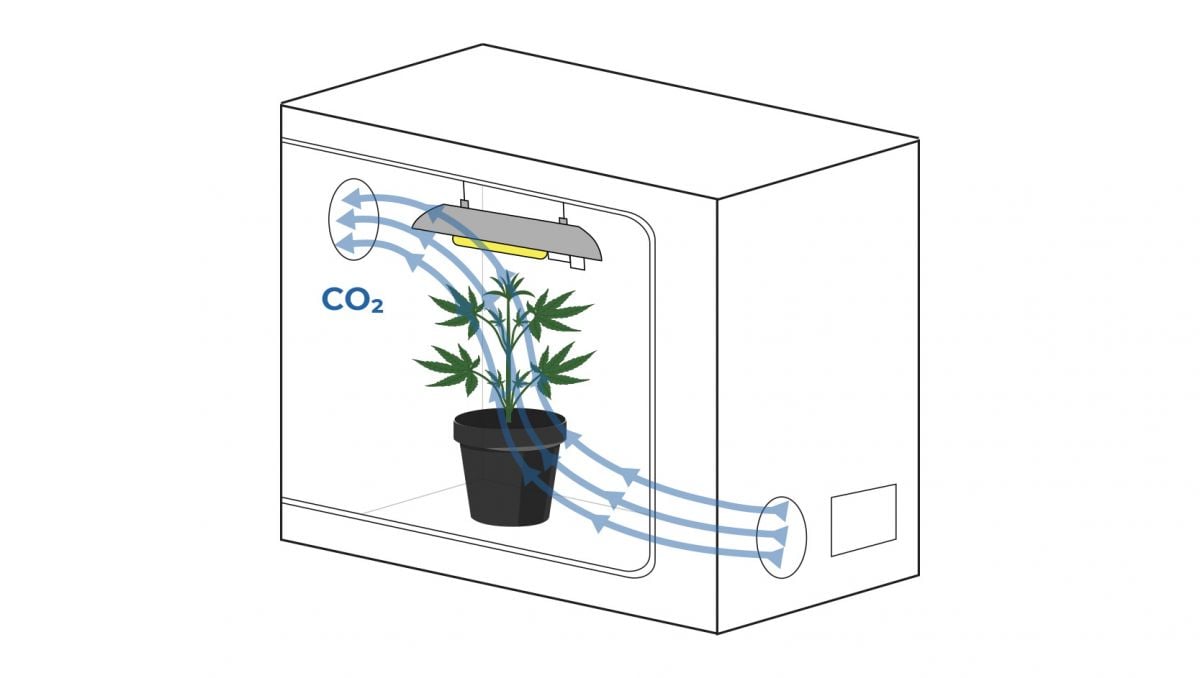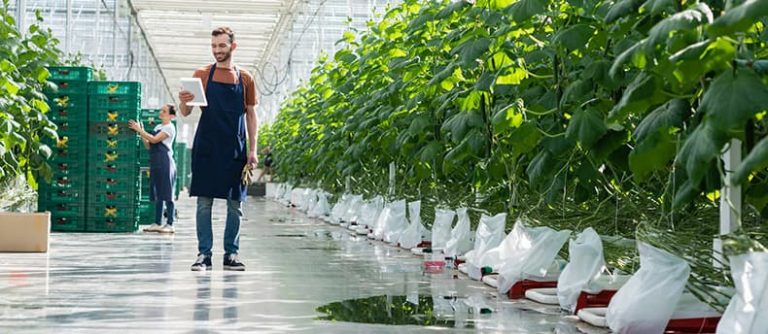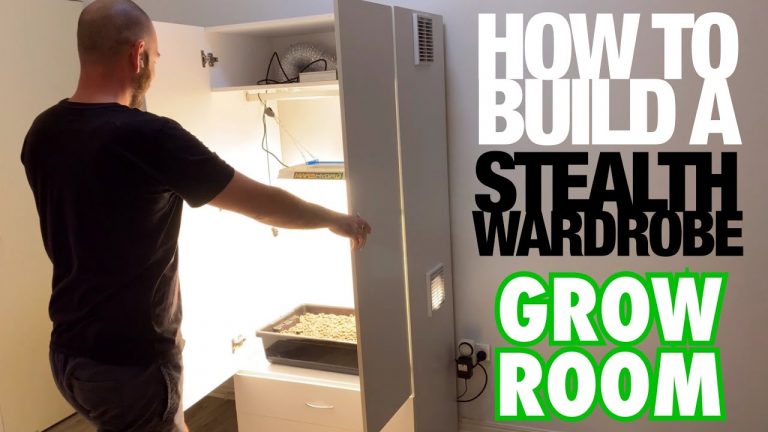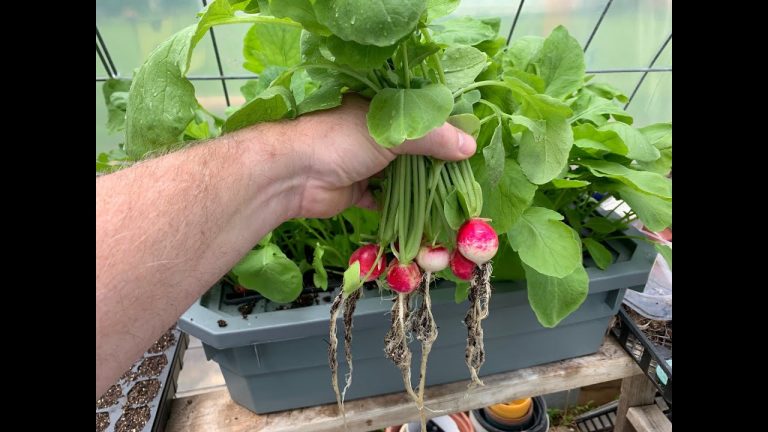How to Ventilate a Grow Tent
Venting a grow tent correctly is crucial for the success of your plants. If you don’t ventilate your grow tent, then the hot air will build up and stress your plants, which can lead to decreased yields and unhealthy growth. There are a few things that you need to keep in mind when ventilating your grow tent.
First, you need to make sure that you have an exhaust fan that is powerful enough to remove all of the hot air from the grow tent. Second, you need to make sure that the intake vents are large enough to allow fresh air to flow into the grow tent. Third, you need to position the exhaust fan and intake vents so that they are not blowing directly on your plants.
- Place your grow tent in an area with good airflow
- Place a fan in the grow tent, pointing towards an open window or door
- Turn on the fan and allow it to run for several minutes to ventilate the grow tent
- Repeat this process as needed to ensure proper ventilation for your plants
How to Set Up a Ventilation System for a LED Grow Tent
How Do I Get the Airflow in My Grow Tent?
If you want to improve the airflow in your grow tent, there are a few things you can do.
First, make sure that the intake vents are open and unobstructed. These vents should be located near the bottom of the grow tent, and they allow fresh air to enter the tent.
Next, take a look at the exhaust vents. These should be located near the top of the grow tent, and they allow hot air and fumes to exit the tent. Make sure that these vents are also open and unobstructed.
You can also improve airflow by using a fan inside the grow tent. A fan will help circulate air throughout the space, which can help prevent hot spots and promote even growth. Just be sure to place the fan so that it’s not blowing directly on your plants.
Finally, consider adding an oscillating fan to your grow room setup. An oscillating fan will help distribute air evenly throughout the space, which can further improve circulation and prevent stagnant pockets of air from forming.
Should I Run My Exhaust Fan in My Grow Tent All the Time?
The simple answer is no, you should not run your exhaust fan in your grow tent all the time. There are a few reasons for this. The first reason is that it will dry out your plants.
The second reason is that it will make it harder for your plants to photosynthesize. And the third reason is that it can lead to mold and mildew growth.
Now, let’s take a closer look at each of these reasons.
When you run your exhaust fan all the time, it will dry out your plants. This is because the fan sucks out all of the moisture in the air and leaves your plants dried out. If you live in a humid area, this can be especially damaging to your plants.
Not only will they lose moisture, but they could also start to wilt and die.
Another reason why you shouldn’t run your exhaust fan all the time is because it makes it harder for your plants to photosynthesize. Photosynthesis is how plants convert sunlight into food and energy.
But when there’s no air movement, the process doesn’t work as well. So by running your exhaust fan all the time, you’re making it harder for your plants to get the food and energy they need to grow strong and healthy.
Finally, running your exhaust fan all the time can lead to mold and mildew growth.
Mold and mildew love damp and dark places with little air circulation. So by running your exhaust fan all the time, you’re creating the perfect environment for them to thrive in! Not only is this bad for your plant’s health, but it can also be dangerous for yours as well (especially if you have allergies).
How Often Should Grow Tent Be Ventilated?
If you’re growing cannabis in a grow tent, one of the most important things to do is ventilate your tent regularly. Cannabis plants need fresh air to grow properly, so it’s important to have a good ventilation system in place. But how often should you ventilate your grow tent?
The answer to this question depends on a few factors, including the size of your grow tent, the number of plants you’re growing, and the type of ventilation system you’re using. Generally speaking, though, you should aim to ventilate your grow tent at least once per day.
If you have a small grow tent or are only growing a few plants, you may be able to get away with Venting your tent every other day.
However, if you have a larger grow operation or are using an air-cooled lighting setup, it’s best to ventilate daily.
No matter what size operation you’re running, it’s always best to err on the side of caution and Vent Your Tent more often than less. Your plants will thank you for it!

Credit: 2fast4buds.com
Diy Grow Tent Ventilation
If you’re looking to get into gardening, but don’t have a lot of space, a grow tent might be the answer for you. Grow tents provide an easy way to create a controlled environment for your plants, and they can be set up just about anywhere in your home. Ventilation is an important part of any grow tent setup, and there are a few different ways to go about it.
In this blog post, we’ll discuss everything you need to know about ventilating your grow tent.
Why is Ventilation Important?
Ventilation is important in a grow tent for two main reasons: temperature control and air circulation.
Proper ventilation will help keep your grow tent at the optimal temperature for your plants, and it will also help circulate fresh air throughout the space. This is especially important if you’re growing plants that produce strong odors, as proper ventilation will help remove any unwanted smells from the room.
Types of Ventilation Systems
There are two main types of ventilation systems that can be used in a grow tent: natural and mechanical. Natural ventilation relies on convection currents to move air through the space, while mechanical ventilation uses fans or other devices to force air movement. Each type of system has its own advantages and disadvantages, so it’s important to choose the right one for your needs.
Here’s a quick overview of each type:
Natural Ventilation
Pros: Low cost, easy to set up
Cons: Not as effective as mechanical ventilation at circulating air; can’t be used to cool down the space
Mechanical Ventilation
Pros: More effective at circulating air; can be used to cool down the space
4X8 Grow Tent Ventilation Setup
If you’re looking to set up a 4×8 grow tent for ventilation, there are a few things you’ll need to consider. First, you’ll need to decide on the size of fan you’ll need. A good rule of thumb is to choose a fan that will move about double the volume of air that your grow tent is in.
So, for a 4×8 grow tent, you’ll want a fan that can move at least 8 cubic feet per minute (cfm).
Next, you’ll need to determine the number of vents you’ll need. This will depend on the size of your grow tent and the type of plants you’re growing.
For most 4×8 tents, two vents should be sufficient. One vent should be placed near the top of the tent and one near the bottom.
Finally, you’ll need to connect your fan(s) and vents using ducting.
The type of ducting you use will depend on the size and type of fan(s) you’re using. Be sure to use tape or clamps to secure all connections so that no air leaks out.
Following these steps will ensure that your 4×8 grow tent is properly ventilated and provides an ideal environment for your plants!
Grow Tent Ventilation Fan
In a grow tent, proper ventilation is key to the success of your plants. Without it, they can succumb to heat stress and poor air circulation, which can lead to disease and death. A grow tent ventilation fan helps to ensure that your plants get the fresh air they need to thrive.
There are a few things to consider when choosing a grow tent ventilation fan. The size of the fan is important, as you want one that will be able to move enough air for the size of your tent. The level of noise is also something to think about, as you don’t want a loud fan disrupting your peace and quiet.
Additionally, make sure that the fan you select is rated for use in damp environments, as many grow tents can be quite humid.
Once you have selected the perfect grow tent ventilation fan for your needs, installing it is simple. Most fans come with all the necessary hardware and instructions.
Simply mount the fan in the desired location and plug it in!
2X2 Grow Tent Ventilation Setup
Ventilation is an important part of any grow tent setup. Without proper ventilation, your plants will not get the air circulation they need to thrive. Here is a step-by-step guide to setting up a ventilation system for your 2×2 grow tent:
1. Start by installing a fan in the top of your grow tent. This will be your exhaust fan.
2. Next, install an intake fan in the bottom of the grow tent.
This will bring fresh air into the tent.
3. Make sure that both fans are connected to ducting that goes outside of the grow tent. This will ensure that stale air is being removed from the tent and fresh air is being brought in.
4. Finally, add some vents near the top of the grow tent so that hot air can escape.
4X4 Grow Tent Ventilation Setup
As the weather gets warmer, many gardeners are starting to think about their ventilation setup for their 4×4 grow tent. There are a few things to consider when setting up your venting system, and we’ve got all the details below!
First, you’ll need to decide what type of fan you want to use.
There are two main types of fans – inline fans and exhaust fans. Inline fans are installed inside the grow tent, and they help to circulate air throughout the space. Exhaust fans are installed outside of the grow tent, and they work to pull hot air out of the space.
Once you’ve selected your fan, it’s time to install it! If you’re using an inline fan, simply connect it to your ducting system. If you’re using an exhaust fan, you’ll need to install it in a way that allows it to vent out of the grow tent.
This typically means drilling a hole in the top or side of the tent, and then attaching the fan directly to that hole.
Next, you’ll need to set up your ducting system. This will allow air to flow from your fan into (or out of) your grow tent.
You can use PVC pipe or flexible ducting for this step – just make sure that everything is properly sealed so that no air is escaping anywhere along the way.
Finally, once everything is hooked up, turn on your fan and check for any leaks in your system. Make sure that all of your connections are tight so that air is flowing smoothly through your entire setup.
That’s it – you’re ready to start growing!
Grow Tent Ventilation Kit
If you’re looking to set up a grow tent, one of the most important things you’ll need is a good ventilation kit. A grow tent ventilation kit should include everything you need to get your tent set up and running smoothly. Here’s what you should look for in a good grow tent ventilation kit:
First, make sure that the kit includes an exhaust fan. The exhaust fan will help to remove any hot air that builds up inside the tent, keeping your plants from getting too warm.
Next, check to see if the kit comes with an intake fan.
The intake fan will help bring fresh air into the tent, keeping your plants healthy and happy.
Finally, take a look at the ducting that’s included in the kit. Good quality ducting will help ensure that the air flows smoothly through your system, without any leaks or blockages.
When you’re choosing a grow tent ventilation kit, it’s important to consider all of these factors to make sure that you’re getting everything you need. With a little bit of research, you can find a great deal on a high-quality ventilation kit that will keep your grow tent running smoothly for years to come!
Do I Need Intake Fan for Grow Tent
If you’re growing indoors, then you’ll need an intake fan for your grow tent. An intake fan helps to circulate fresh air into the grow tent, and also prevents hot air from building up inside. Without an intake fan, your grow tent will quickly become too hot and humid, which is not ideal for plant growth.
Conclusion
If you’re growing plants indoors in a grow tent, it’s important to make sure the tent is properly ventilated. Poor ventilation can lead to problems like mold and mildew, and can also cause your plants to suffer from heat stress.
To ensure good ventilation, start by making sure the intake vents are open and unobstructed.
Then, set up some fans to help circulate air inside the tent. Be sure to position the fans so that they’re blowing air across the top of the plant canopy – this will help prevent hot spots from forming.
It’s also a good idea to install a carbon filter on your exhaust fan.
This will help remove any unwanted smells from your grow room, and will also help filter out harmful pollutants like mold spores and pesticides.





